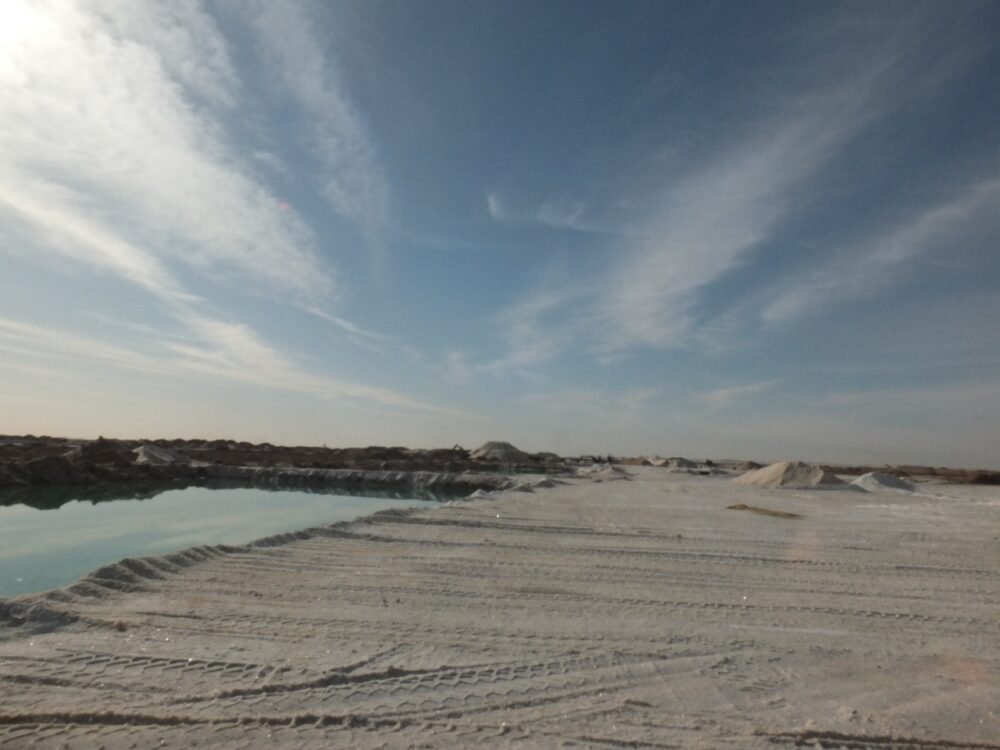Customer Support: 604793
Rock Salt
Rock salt, also known as halite, is a naturally occurring mineral form of sodium chloride (NaCl). It is commonly found in underground salt deposits and is often mined for various purposes. Here are some key points about rock salt:
1. Composition: Rock salt is composed mainly of sodium chloride, with small amounts of impurities that can give it different colors and flavors. It is typically colorless or white but can have shades of pink, red, yellow, or blue due to the presence of impurities like iron oxide or potassium chloride.
2. Formation: Rock salt forms when seawater or saltwater lakes evaporate, leaving behind deposits of salt minerals. Over time, these deposits can become buried under layers of sediment and form underground salt beds.
3. Extraction: Rock salt is usually mined through the process of solution mining or conventional mining. In solution mining, water is injected into the salt deposit, and the resulting brine is pumped out and processed to obtain salt. In conventional mining, shafts are sunk into the earth to reach the salt deposit, and the salt is extracted using heavy machinery.
Rock salt, also known as halite, is a naturally occurring mineral form of sodium chloride (NaCl). It is commonly found in underground salt deposits and is often mined for various purposes. Here are some key points about rock salt:
1. Composition: Rock salt is composed mainly of sodium chloride, with small amounts of impurities that can give it different colors and flavors. It is typically colorless or white but can have shades of pink, red, yellow, or blue due to the presence of impurities like iron oxide or potassium chloride.
2. Formation: Rock salt forms when seawater or saltwater lakes evaporate, leaving behind deposits of salt minerals. Over time, these deposits can become buried under layers of sediment and form underground salt beds.
3. Extraction: Rock salt is usually mined through the process of solution mining or conventional mining. In solution mining, water is injected into the salt deposit, and the resulting brine is pumped out and processed to obtain salt. In conventional mining, shafts are sunk into the earth to reach the salt deposit, and the salt is extracted using heavy machinery.
4. Uses: Rock salt has various applications in different industries and everyday life. Some common uses include:
– De-icing: Rock salt is widely used as a de-icing agent to melt ice and snow on roads, sidewalks, and highways during winter.
– Food: It is a common seasoning and food preservative. It is also used in the production of processed foods like cheese and canned goods.
– Chemical industry: Rock salt is used in the manufacturing of various chemicals such as chlorine, caustic soda, and soda ash.
– Water softening: It is used in water treatment systems to remove hardness-causing minerals from water.
– Animal husbandry: Rock salt is provided to livestock as a mineral supplement to meet their sodium requirements.
– Health and wellness: Some people use rock salt for bathing, as a scrub, or in salt lamps, claiming various health benefits. However, scientific evidence supporting these claims is limited.
5. Environmental impact: Rock salt can have environmental impacts when large quantities are used for de-icing. It can contaminate water bodies, vegetation, and soil, affecting aquatic life and vegetation. Efforts are being made to minimize the use of rock salt and explore alternative de-icing methods.
It’s important to note that while rock salt is widely used, excessive consumption of sodium chloride can have negative health effects, such as high blood pressure. Therefore, it’s recommended to consume it in moderation and follow dietary guidelines.










